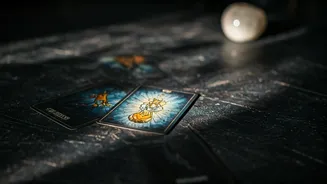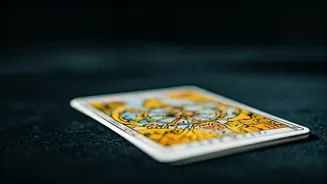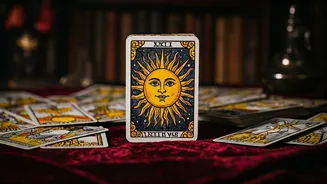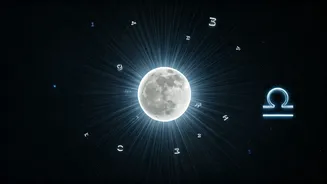Ancient Origins and History
The origins of tarot cards are shrouded in mystery, with their roots often traced back to 15th-century Europe. Initially, they were not used for divination
but as playing cards, adding entertainment to various social gatherings. Over time, the cards evolved beyond mere games, with mystics and occultists recognizing their potential for symbolic interpretation and spiritual exploration. The cards that we know today, are structured with major and minor arcana, the designs became richer and more symbolic as the cards took on a deeper, spiritual significance. The spread and the interpretations became more complex too. The cards gained popularity among those seeking guidance and a deeper understanding of themselves and the world around them. This transformation marked the beginning of tarot's long journey from a simple card game to a powerful tool for self-discovery and insight. Over many generations, the tarot cards evolved from simple playing cards to intricate tools of divination, embracing a legacy of change, learning and self-discovery.
Understanding the Arcana
Tarot decks consist of two primary components: the Major Arcana and the Minor Arcana. The Major Arcana contains 22 cards, each bearing significant symbolic meanings often reflecting major life lessons, archetypes, and significant events. Cards like The Fool, The Magician, and The Lovers represent fundamental aspects of the human experience. The Minor Arcana, on the other hand, consists of four suits – Wands, Cups, Swords, and Pentacles – each with 14 cards (numbered Ace through Ten, plus four court cards: Page, Knight, Queen, and King). Each suit represents an area of life (Wands: action and will, Cups: emotions and relationships, Swords: intellect and challenges, Pentacles: material world and security). Together, the Major and Minor Arcana offer a rich tapestry of symbolic imagery, helping to interpret the various facets of life. By understanding the symbolism of each card, individuals can gain deeper insights into their present circumstances, potential future outcomes, and the underlying forces at play in their lives. The detailed study of the arcana is central to understanding the richness and depth of tarot card interpretation.
Reading the Cards
Reading tarot cards involves several steps, from shuffling and cutting the deck to laying out the cards in specific patterns called spreads. The most common spread is the Celtic Cross, a detailed layout that provides insights into various aspects of the querent's situation, including past influences, current challenges, and future potential. Other popular spreads include the Three-Card Spread (past, present, future) and the one-card draw for a quick answer or daily guidance. The interpretation of the cards relies heavily on intuition and the reader's understanding of the symbolism. Readers consider the position of each card within the spread, its interaction with adjacent cards, and the overall narrative that emerges. The querent, or the person receiving the reading, should focus on their questions and be open to the guidance offered by the cards. This practice is about self-awareness, looking inwards for answers, and seeking a broader perspective on life's complex journey. The art of reading lies in connecting with the cards and utilizing them to reflect upon the deeper facets of life.
Interpreting the Meanings
Each tarot card has a multitude of meanings, which can vary depending on the context of the reading and the reader's intuition. For example, The Sun card in the Major Arcana typically signifies joy, success, and positivity, but in a reading about career, it might suggest a period of growth and recognition. The meanings can also change based on the card's position in a spread and the cards around it. A card drawn in reverse indicates that the card's energy is blocked or that its positive aspects are lessened. The intuitive process is critical, along with an understanding of basic meanings. By allowing the images and symbols on the cards to resonate, a reader can connect the querent's situation to the card's meaning and develop a personalized interpretation. This skill grows with practice, patience, and a willingness to explore the depths of symbolism. The best tarot readings come from a blend of knowledge, insight, and an intimate awareness of what each card symbolizes.
Using Tarot for Guidance
Tarot cards can provide guidance in numerous areas of life, from relationships and career to personal growth and spiritual development. By asking specific questions and interpreting the card's answers, individuals can gain clarity about challenges, opportunities, and potential paths. Tarot can assist in decision-making by offering insights into possible outcomes of different choices. For example, a person facing a difficult decision might use a spread to explore the potential consequences of each option. The cards can offer a unique perspective, allowing individuals to explore the hidden dynamics of their situation. Tarot is also a tool for self-reflection. When used for personal introspection, the cards can reveal hidden aspects of the self, challenge limiting beliefs, and facilitate greater self-awareness. However, it's important to remember that tarot provides guidance, not fixed predictions. Ultimately, it is up to the individual to make choices and chart their own course. In any situation, remember that tarot is best used as a tool to gain deeper insight into your own abilities.







